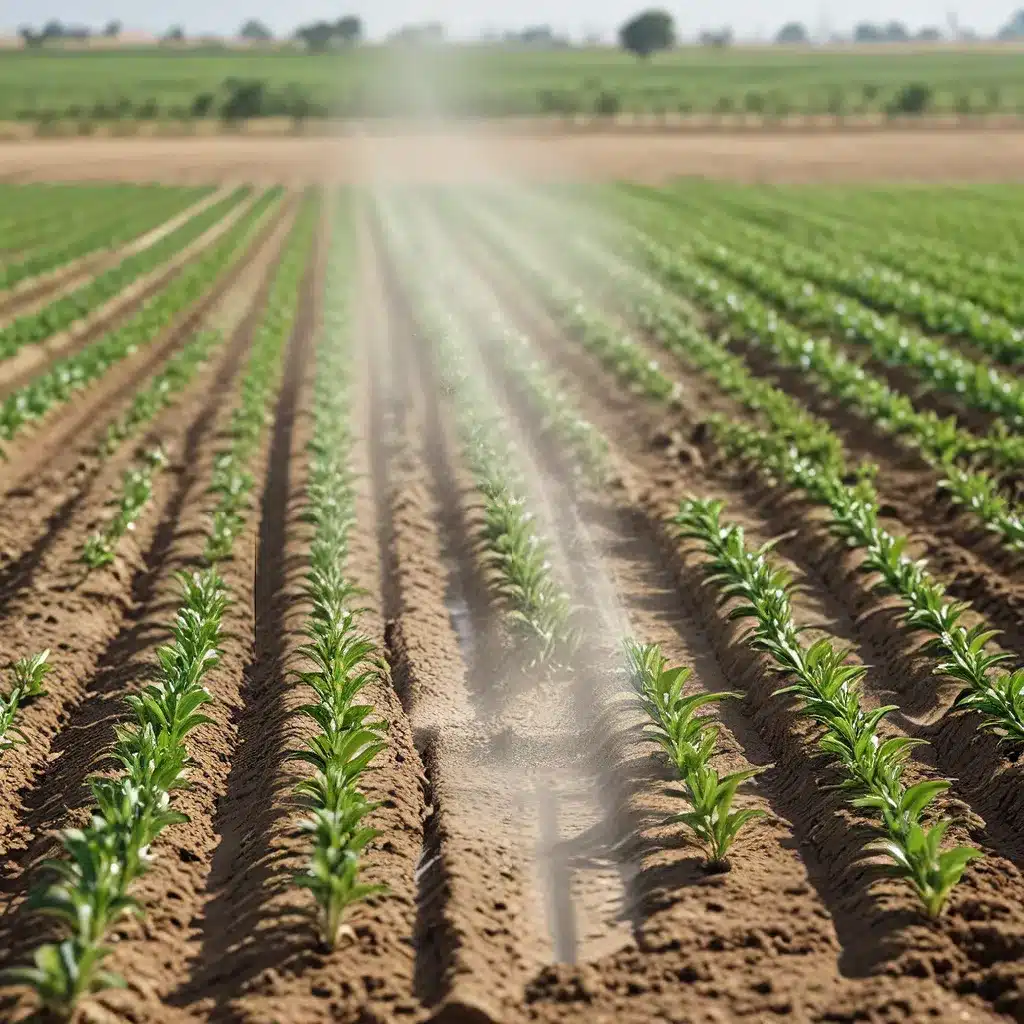
In an era where water scarcity and the need for sustainable agriculture are critical global challenges, the role of sensor networks and the Internet of Things (IoT) has become increasingly important. Precision irrigation, enabled by sensor-driven technology, offers a promising solution to optimize water usage and enhance the environmental sustainability of agricultural practices.
The Rise of Sensor Networks in Precision Agriculture
Sensor networks have emerged as a transformative technology in the agricultural sector, revolutionizing the way farmers approach irrigation, crop management, and resource optimization. These interconnected networks of sensors, strategically deployed across farmlands, gather real-time data on soil moisture, temperature, humidity, and other environmental conditions. By leveraging this data-driven approach, farmers can make informed decisions to precisely apply water, fertilizers, and other resources, minimizing waste and maximizing productivity.
One of the key advantages of sensor-driven precision irrigation is the ability to adapt to the specific needs of each crop and microclimate within a given farmland. Traditional irrigation methods often rely on a one-size-fits-all approach, leading to over-watering or under-watering of certain areas. In contrast, sensor networks enable targeted and responsive irrigation, ensuring that each plant receives the optimal amount of water it requires, reducing water consumption and preventing water-related stress.
Optimizing Water Usage through Sensor-Driven Irrigation
The integration of sensor networks and IoT technologies has revolutionized the way water is managed in agriculture. By deploying a network of soil moisture sensors, farmers can monitor the real-time moisture levels across their fields and automate the irrigation system accordingly. This precision-based approach not only reduces water consumption but also improves crop yield and quality, as plants receive the exact amount of water they need, when they need it.
Studies have shown that sensor-driven precision irrigation can reduce water usage by up to 30% compared to traditional irrigation methods, while maintaining or even improving crop yields. This significant reduction in water consumption is particularly crucial in regions facing water scarcity or experiencing the effects of climate change, where water availability is a pressing concern.
Moreover, the integration of predictive analytics and machine learning algorithms into sensor-driven irrigation systems can further enhance water efficiency. By analyzing historical data and forecasting weather patterns, these systems can anticipate the water needs of crops and proactively adjust irrigation schedules, ensuring optimal resource utilization.
Enhancing Sustainability through Sensor-Driven Precision Agriculture
Beyond water optimization, sensor networks in precision agriculture contribute to environmental sustainability in various ways. By precisely monitoring and managing the application of fertilizers, pesticides, and other agricultural inputs, sensor-driven systems can reduce the ecological impact of these chemicals, minimizing the risk of soil degradation and groundwater contamination.
Research has shown that precision agriculture techniques, enabled by sensor networks, can lead to a significant reduction in the use of fertilizers and pesticides, often by 30-50%. This not only improves the environmental footprint of agricultural operations but also contributes to the long-term sustainability of the land, ensuring that it remains productive for future generations.
Moreover, the data-driven insights provided by sensor networks can help farmers make more informed decisions about crop rotation, soil management, and the introduction of cover crops, further enhancing the ecological balance of their farmlands. By embracing these sustainable practices, farmers can play a crucial role in addressing global challenges, such as climate change and food security.
Securing the IoT Infrastructure in Precision Agriculture
As the adoption of sensor networks and IoT technologies in precision agriculture continues to grow, the security of these systems has become a critical concern. The interconnected nature of IoT devices, combined with the sensitive nature of agricultural data, makes these systems vulnerable to cyber threats, such as hacking, data breaches, and unauthorized access.
Robust security measures, including data encryption, access controls, and network monitoring, are essential to protect the integrity and confidentiality of the data collected by sensor networks. Farmers and agricultural organizations must work closely with cybersecurity experts to implement secure IoT architectures and regularly update their security protocols to stay ahead of evolving threats.
Additionally, the standardization and interoperability of sensor network protocols and IoT platforms can help enhance the overall security of precision agriculture systems. By adhering to industry-recognized security standards and best practices, farmers can ensure that their sensor networks are resilient and protected against malicious actors.
Powering Sensor Networks: Sustainable Energy Management
The successful deployment and long-term viability of sensor networks in precision agriculture rely heavily on energy management. Battery-powered sensor nodes, which are often deployed in remote or hard-to-reach areas, require efficient and sustainable energy solutions to ensure continuous data collection and communication.
Solar-powered sensor nodes, energy harvesting techniques, and low-power communication protocols have emerged as promising approaches to address the energy challenges in precision agriculture. By leveraging these renewable and energy-efficient technologies, farmers can minimize the carbon footprint of their sensor networks while reducing maintenance costs and ensuring reliable data acquisition.
Sensor-Networks.org, a leading resource in the field of sensor networks and IoT, provides detailed information on the latest advancements in energy-efficient sensor designs and power management strategies for precision agriculture applications.
Conclusion: Embracing Sensor-Driven Precision Irrigation for a Sustainable Future
As the global demand for food and water continues to rise, the importance of sensor-driven precision irrigation in agriculture has become increasingly evident. By leveraging the power of sensor networks and IoT technologies, farmers can optimize water usage, enhance crop yields, and promote sustainable agricultural practices, all while safeguarding the environmental integrity of their farmlands.
The integration of secure and energy-efficient sensor networks, combined with data-driven decision-making, represents a transformative shift in the way we approach agriculture and water management. As the adoption of these technologies continues to grow, we can expect to see a future where precision irrigation and sustainable agriculture become the norm, paving the way for a more food-secure and environmentally responsible world.